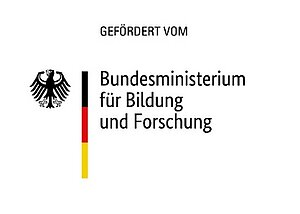
VOMBAT
Miniaturised entanglement source in the telecom sector based on AlGaAs Bragg reflection waveguides
Programm Indentification Code: Hochleistungskomponenten und optimierte Materialien für die Quantenkommunikationen
(Funded by the German Federal Ministry of Education and Research)
Duration: March 2023 – March 2026
Partners
Fraunhofer-Institut für Angewandte Festkörperphy-sik (Freiburg), Fraunhofer-Institut für Nachrichtentechnik, Heinrich-Hertz-Institut (Berlin), Universität des Saarlandes (Saarbrücken), Ferdinand-Braun-Institut gGmbH, Leibniz-Institut für Höchstfrequenztechnik (Berlin)
Project description
Sources of single and entangled photons are key components for quantum technologies such as quantum communication, computing and metrology. A central challenge in the realisation of global quantum networks is transmission losses in optical fibres. Therefore, photon sources emitting in the low-loss telecommunication wavelength bands are required. There are a variety of applications of entangled photon pair sources, the most important being quantum key distribution (QKD), which ideally should also take place between multiple users. For such a multi-party quantum key distribution, one needs a pair source with sufficient spectral bandwidth so that photon pairs can be sent to multiple users simultaneously using wavelength demultiplexing.
In VOMBAT, a miniaturised source of entangled photon pairs based on AlGaAs Bragg reflection waveguides is to be developed, which will be combined with wavelength-division multiplexing by means of a hybrid photonic integrated circuit "on-chip".
The AlGaAs-based nonlinear Bragg reflection waveguides generate entangled photon pairs in the telecom range (~1550 nm). The material AlGaAs is chosen because laser diodes for the spectral range of the pump wavelength (~775 nm) are also AlGaAs-based, and thus a complete, monolithic on-chip integration can be achieved.
The focus of the project is on the miniaturisation of such a photon pair source, whereby different integration depths are to be targeted. The individual goals pursued within the project are: (1) Development of broadband tunable pump lasers for passive AlGaAs Bragg reflection waveguides based on hybrid optical diode lasers, as well as monolithic tunable DBR lasers with large bandwidth. (2) Development of passive AlGaAs waveguides with a fidelity to the maximally entangled state of ≥0.97 and a CAR (Coincidence-to-Accidental Ratio) ≥100. (3) Active AlGaAs waveguides with monolithically integrated pump source with a fidelity ≥0.8 and a CAR ≥50. (4) Development of a hybrid integrated photon pair source. (5) Hybrid integrated photon pair source coupling with wavelength division multiplexing with at least 8 output channels and 5 nm channel width. All sources will be room temperature capable, which is a significant economic advantage over cryogenic techniques. An evaluation of the source is planned during the project at UDS on a fibre link.
